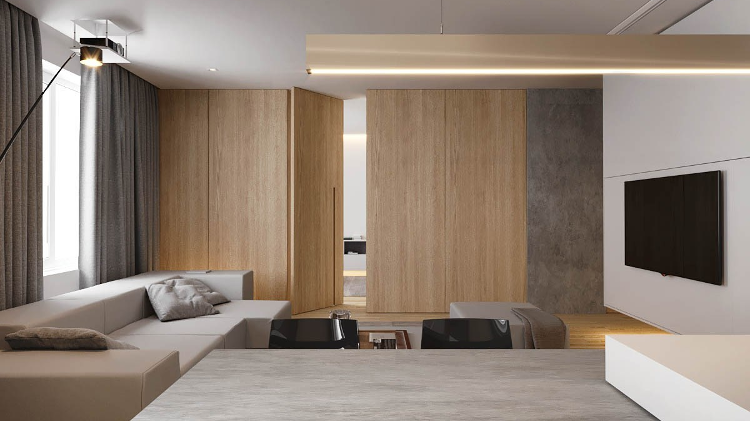Mimetic doors: modern solution to organize and expand spaces.

In this project, the panel where the mimicked doors of this social area are integrated with the wine cellar.
Image: Maura Mello
Chances are you’ve heard of mimic doors or “invisible doors” as it can be called because it camouflages itself in walls. Increasingly used, the architectural resource can be used in residential, commercial and corporate projects and leaves the environments wider by cleaning its design and look, in addition to granting sophistication and elegance to environments of different decorative styles.
Architects Paula Passos and Danielle Dantas, from Dantas e Passos Arquitetura, highlight what is different about the item and discuss in which situations they can be configured as the ideal choice for the project.
PRACTICALITY
In addition to aesthetic issues, one of the great advantages of the decorative door is related to the fact that it integrates and contributes to organizing the project environments. “The mimicked doors also help to solve construction problems such as hiding wiring, electrical panels, hydraulic dolls or even air conditioning pipes in a more practical way”, explains architect Paula.
Space optimization

Mimicry door can help those who want to save space in home decor.
Image: Pinterest
Made to measure, doors mimicked in small environments help to gain useful area. After all, it can be an incredible solution to camouflage the door at times when the environment requires more space.
Become a Marix distributor in EUA
Conviértete en un distribuidor Marix en EUA
Modern
On the rise, mimicry doors are modern, technological and excellent options to create more relaxed environments. In addition to being practical, they bring style and can be customized with panels accompanied by indirect lighting effects that enhance the rooms even more.
Finishes, hardware and style.
Finishes such as natural, lacquered, smooth, slatted or painted wood are the most commonly used mimicry door styles. However, mimicked doors are also produced with other materials such as metal panels or in the structure of the system.
“The white and white finish is a very light and discreet solution. A mirror-coated wall can receive the mirror door with the hidden hardware, providing the impression of a large mirrored panel”, suggests architect Danielle. As for the style, Paula Passos gives the tip: “They can be pivoting, pantographic or sliding doors and, as for the finish, covered with wallpaper, printed ceramics or painted with the same colors as those specified for the walls. It is a very feasible way to mimic.
Regarding the hardware, Danielle explains that in general they are not visible and are usually quite discreet. “Often, we don’t even need to include locks or handles, as the carpentry itself offers the space for handling them”, concludes Danielle.
Source: Nossa Casa – UOL
¿Quieres aprender todo sobre Montaje y Instalación de Construcciones de Madera? Pulsa aqui y torne-se un profesional!



